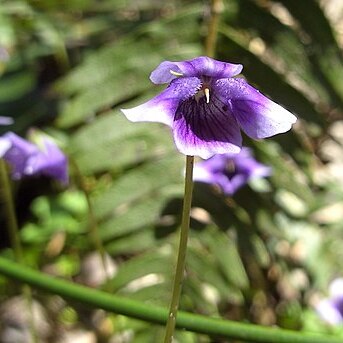A herb that keeps growing from year to year. It grows 17 cm tall and spreads 1-2 m wide. It has rings of green leaves 15-2 m long and 20-30 mm wide. It has a single flower in stalks 6-17 cm tall. They are white with violet centres. The fruit are brown and 9 mm by 4 mm in size.

